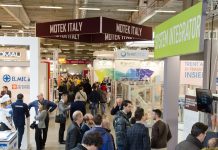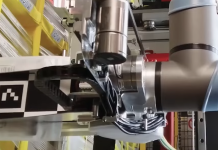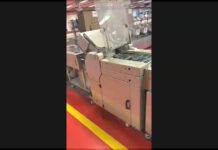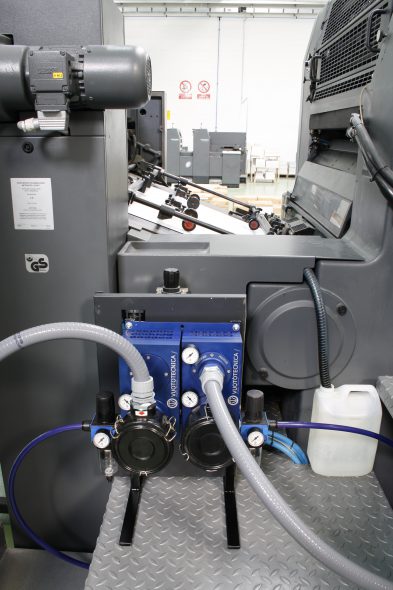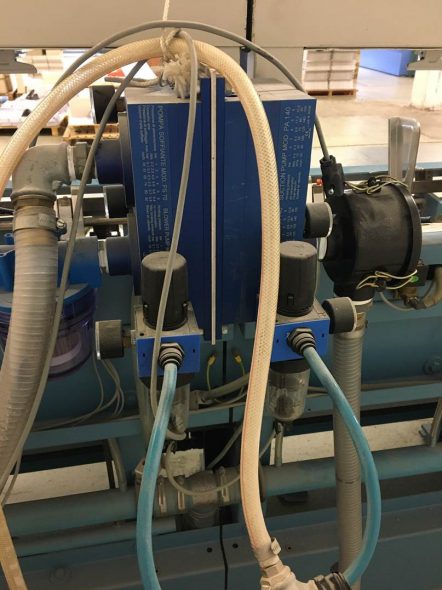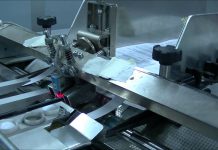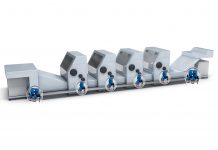In the printing industry, vacuum is used for sheet feeding to offset presses, from inlet to outlet, after printing, while air at low feed pressure is often used to separate the sheets.
This is a balanced dance between vacuum and blown air that needs to be designed and managed efficiently.
In most cases, however, despite the fact that the feeder has only 6-8 small diameter suction cups, air and vacuum are generated and excluded by a very large pump, almost always placed far from the machine, with a series of bulky pipes.

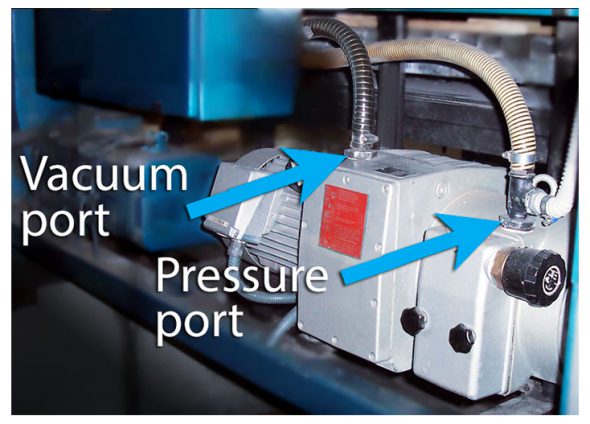
In a foolish way, end customers are in fact invited to centralize the vacuum system, with large pumps located in a single point: precisely to compensate for the distance of the machinery and the length of the pipes.

These pumps are useless, however, because the exaggerated flow rate is then choked by the small pipes that usually feed the suction cups.
The same problem of oversizing is found in relation to the distribution of the low pressure (max +0.6 bar) which, generated by the electric pump, reaches the small nozzles that blow air, used for sheet separation.
The energy expenditure is therefore enormous: the customer is in fact forced to keep the pump motor always powered and at maximum power but the two channels (vacuum and air) are partialized. By means of manual valves, for the vacuum duct, atmospheric air is “entered” into the pipe while for the low pressure duct it is released into the atmosphere.
It is a contradiction to use such oversized pumps. It’s a bit like wanting to reduce the pressure in a water pipe by creating small holes in it that make it leak a bit.
All these losses, especially on the vacuum channel, also increase the wear of the blades on the internal stator of the pump due to friction.
When overheating of the pumps during the summer is more problematic, downtime and maintenance costs are undoubtedly the most important issues in the paper and printing industry.
So, it is a major investment for the end customer that brings neither efficiency benefits nor economic returns.
In order to aggravate the situation, the installed pumps require, due to their tonnage, longer intervention times and costs and skilled workers.
Vuototecnica does not tolerate waste of energy, time and money and to overcome all the problems in the sector designed PA/PS multi-stage pneumatic vacuum generators, less bulky and more efficient, with reduced weight and guaranteed energy savings.
PA/PS pneumatic vacuum generators offer the possibility to adjust the vacuum (or pressure) degree and the flow rate, according to the supply air pressure, with the opportunity for the customer to manage the pumps with proportional valves for compressed air and limit the consumption to a minimum, depending on the weight and porosity of paper and cardboard in the printing machine.
These pumps are surprisingly quiet (60-65dB) and do not overheat. They also insufflate only fresh air between the sheets, free of impurities, condensation or oil vapours.
Another advantage: they reduce the electrostatic charges generated by the blown hot air of traditional electric pumps.
The materials are of the latest generation, which makes it possible to reduce the weight and overall dimensions and to install them directly on board, on the machine, not further away, thus also reducing the piping.
The maintenance consists only in cleaning the suction or blower filters and they are guaranteed for 5 years.
The entire Graphic Division line was created to meet the demands of the printing and graphics industry, and consists of suction and blowing pumps of different sizes and capacities, suction cups of all shapes and materials, filters, spare parts and supports for each application.
To find out more about the Graphic range, you can download the catalogue: www.vuototecnica.net.














